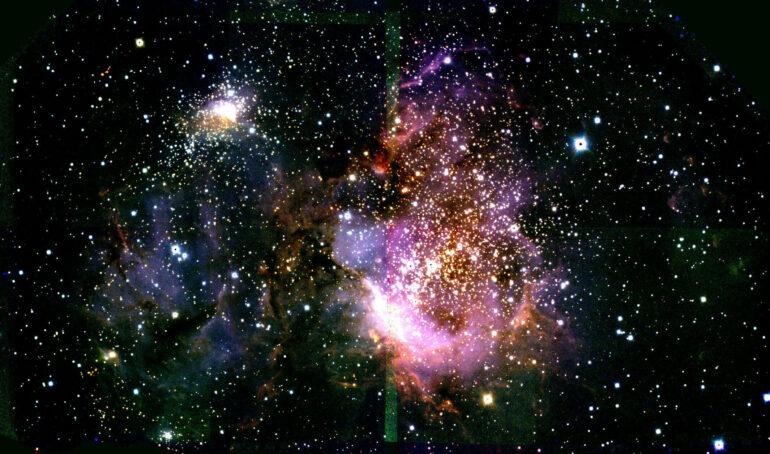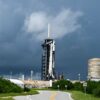Observations of a star forming region on the outskirts of the Milky Way galaxy, where conditions from the early universe are still preserved, found that the distribution of stellar masses is not radically different from what is observed near the solar system. This is an important step toward understanding the effect of the local environment on the mass distribution of stars.
Most stars form in clusters with other stars of various masses. All the clusters near the sun have similar distributions of masses, but astronomers couldn’t be sure if this was true over a wider area, or due to local conditions.
To answer this question, a research team led by Chikako Yasui, an Assistant Professor at the National Astronomical Observatory of Japan, used the Subaru Telescope to observe Sh 2-209 (hereafter referred to as S209), a star-forming region in the outer part of our Milky Way galaxy. Compared to the chemical composition of interstellar gas in the solar neighborhood, S209 is closer to pure hydrogen, containing smaller amounts of heavier elements. This makes it a good analog for the prevailing conditions in the universe 10 billion years ago.
The team identified two clusters in S209, one large and one small, and found that the larger cluster is composed of as many as 1,500 member stars. This is the first time that such a large-scale star-forming cluster has been identified in the outer part of the galaxy. Thanks to the Subaru Telescope’s high sensitivity and high spatial resolution, the team succeeded in detecting stars ranging from about one-tenth the mass of the sun to 20 times the mass of the sun.
The results show that S209 has only a slightly higher fraction of massive stars compared to star-forming regions in the solar neighborhood, and it also has a higher fraction of stars less massive than the sun. The findings were published under the title, “Mass Function of a Young Cluster in a Low-metallicity Environment. Sh 2-209,” in The Astrophysical Journal on February 2, 2023.
“The outer part of the Milky Way are known to have properties similar to those of the early universe,” explains Yasui. “Our results suggest that although a relatively large number of massive stars formed in the early universe, the number is not dramatically different from that of typical star clusters in the present day.”
More information:
Chikako Yasui et al, Mass Function of a Young Cluster in a Low-metallicity Environment. Sh 2-209, The Astrophysical Journal (2023). DOI: 10.3847/1538-4357/ac94d5
Citation:
Survey of star masses in early universe analog shows distribution is not radically different from present day clusters (2023, July 6)



